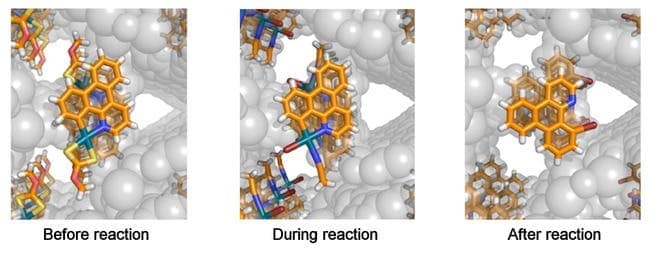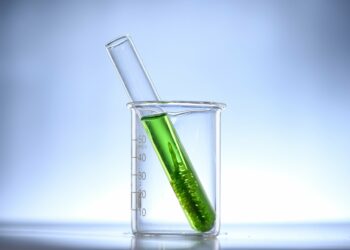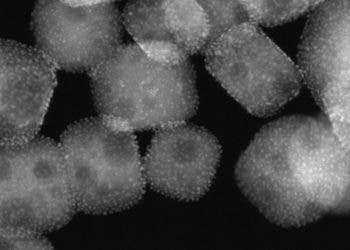Since its advent some 100 years ago, crystallography has become one of the most important processes in chemical research and development. It involves bombarding a material with X-rays to produce a diffraction pattern as they reflect off the sample. The pattern can be used then to directly determine the atomic structure of the crystal. Using this technique, the structure of DNA was first obserbed, along with that of diamond, table salt, penicillin, numerous proteins, and entire viruses.
Crystallography works for only still structures, yet if Makoto Fujita at the University of Tokyo is correct, then a refined process can be used to image atomic arrangements as chemical reactions happen in real time. This means nothing short of crystallography 2.0 – similar to the technological jump from still photography to motion picture video recording.
Fujita and colleagues studied how a catalyst – a molecule that accelerates a chemical reaction without actually reacting with the elements involved in it – called palladium worked its magic in a reaction where it accelerates the attachment of a bromine atom to a larger molecule. This reaction was carried out in a solution, however modern crystallography can not provide snapshots of atomic structures of molecules moving in a solution. The researchers thus had to employ a trick.

The scientists trapped the catalyst and reacting molecules in a cage, before taking X-ray snapshots during the reaction. This proved to be key for their experiments since it made the molecules still for enough time to allow X-ray imaging capture. This helped Fujita and colleagues better explain and determine how the palladium catalyst played its part in the said reaction. Most importantly, however, the experiment demonstrates a new way to use crystallography to image the structure of changing compounds.
Findings appeared in the Journal of American Chemical Society.






